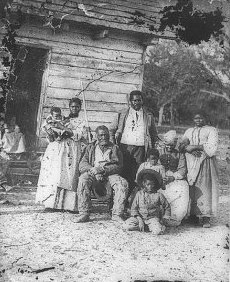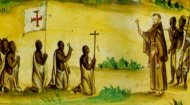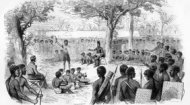|
African Slavery | African Slavery | African Slavery | African Slavery |
|
 |

|
A particularly complex and painful aspect of this history is the impact of biracial children born into slavery. These children, often the result of sexual exploitation and rape perpetrated by enslavers or overseers, faced a unique and harrowing experience. Their presence highlighted the hypocrisy and moral corruption inherent in the system. While some biracial children may have received marginally different treatment (sometimes working indoors as house slaves), their legal status remained unequivocally that of property. Their existence blurred the rigid racial lines the slaveholders sought to enforce, simultaneously reinforcing the trauma of the enslaved mothers and creating distinct communities within the enslaved populace, sometimes leading to complex familial relationships that crossed the master-slave divide. It is impossible to definitively determine how North America might have developed without African slaves, but a dramatically different landscape can be imagined. The immense capital generated by slave labour - which financed banks, insured shipping lines, and fueled the manufacturing sector—would have been absent. The pace of Southern economic development, particularly the rapid dominance of cotton, would have been drastically slowed, potentially limiting the United States’ early global economic influence. Alternative labour sources, such as indentured servitude (which was already in decline) or European immigrants, might have been utilised, but these sources were costly and harder to control. Without the foundational wealth built on coerced labour, the territorial expansion and industrialisation of the young nation would likely have followed a slower, more decentralised, and less wealth-concentrated trajectory. Despite the comprehensive legal and physical controls, resistance was constant, fueling the eventual rise of abolitionism in North America. Early efforts focused on moral appeals and gradual emancipation, primarily led by Quakers and other religious groups. By the 1830s, the movement shifted dramatically with the emergence of radical abolitionists like William Lloyd Garrison, who demanded immediate, uncompensated emancipation. Abolitionism was not monolithic; it included both black and white activists, relying heavily on eloquent testimonials from former slaves like Frederick Douglass and Harriet Jacobs. The movement utilised newspapers, political lobbying, and the dangerous activities of the Underground Railroad, transforming from a fringe moral crusade into a powerful political force that directly challenged the constitutional and economic foundations of the nation, making the conflict between the free and slave states increasingly irrepressible. The Civil War ended the legal institution of slavery, but the legacy of slavery in North America today is profound and pervasive. Emancipation did not erase the deep-seated structures of racial discrimination. The post-war era saw the rise of Black Codes and Jim Crow laws, which sought to maintain white supremacy and economic control over newly freed people, leading to a century of institutionalised segregation, violence, and disenfranchisement. Today, this legacy manifests in persistent racial disparities across virtually every measure of well-being: wealth accumulation, health outcomes, educational attainment, and particularly in the criminal justice system. The systemic denial of fair wages and property rights to generations of black Americans severely limited their ability to build intergenerational wealth, a disadvantage that continues to drive the racial wealth gap today. Understanding and addressing this deep-seated economic and social inequality remains one of the central challenges stemming directly from the nation’s reliance on slave labour. The shadow of bondage is long, requiring ongoing reckoning with historical truth and deliberate efforts toward achieving true equity.
|








